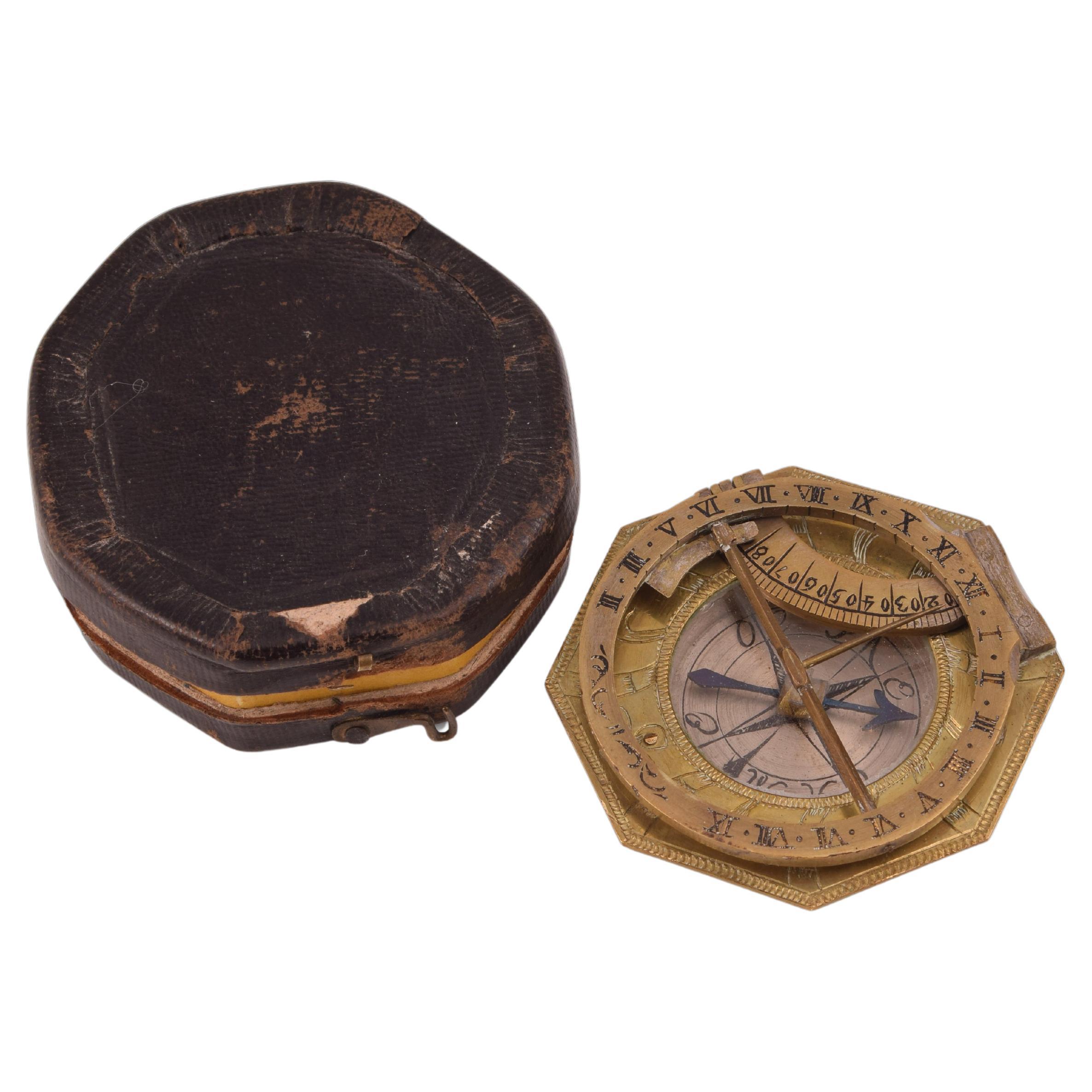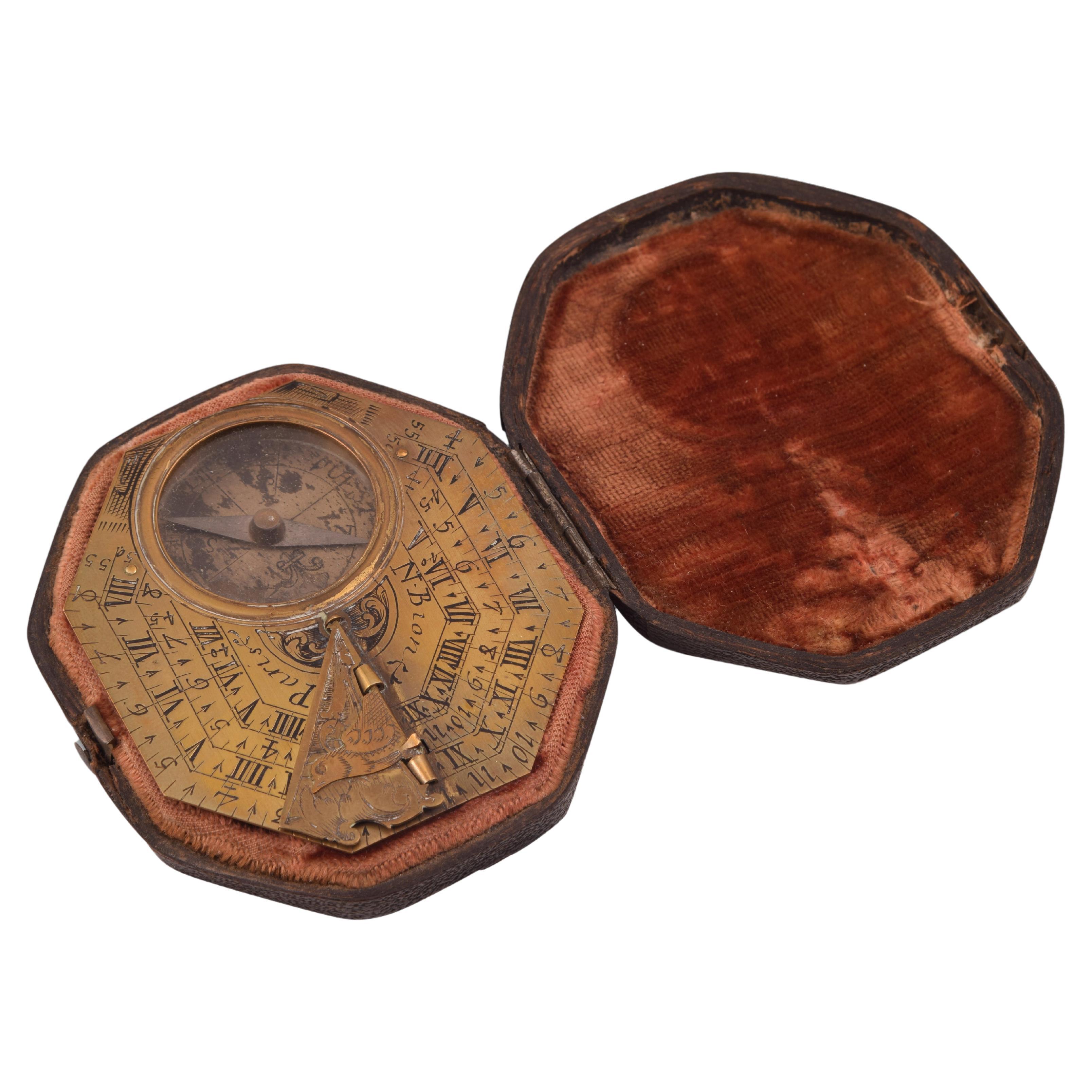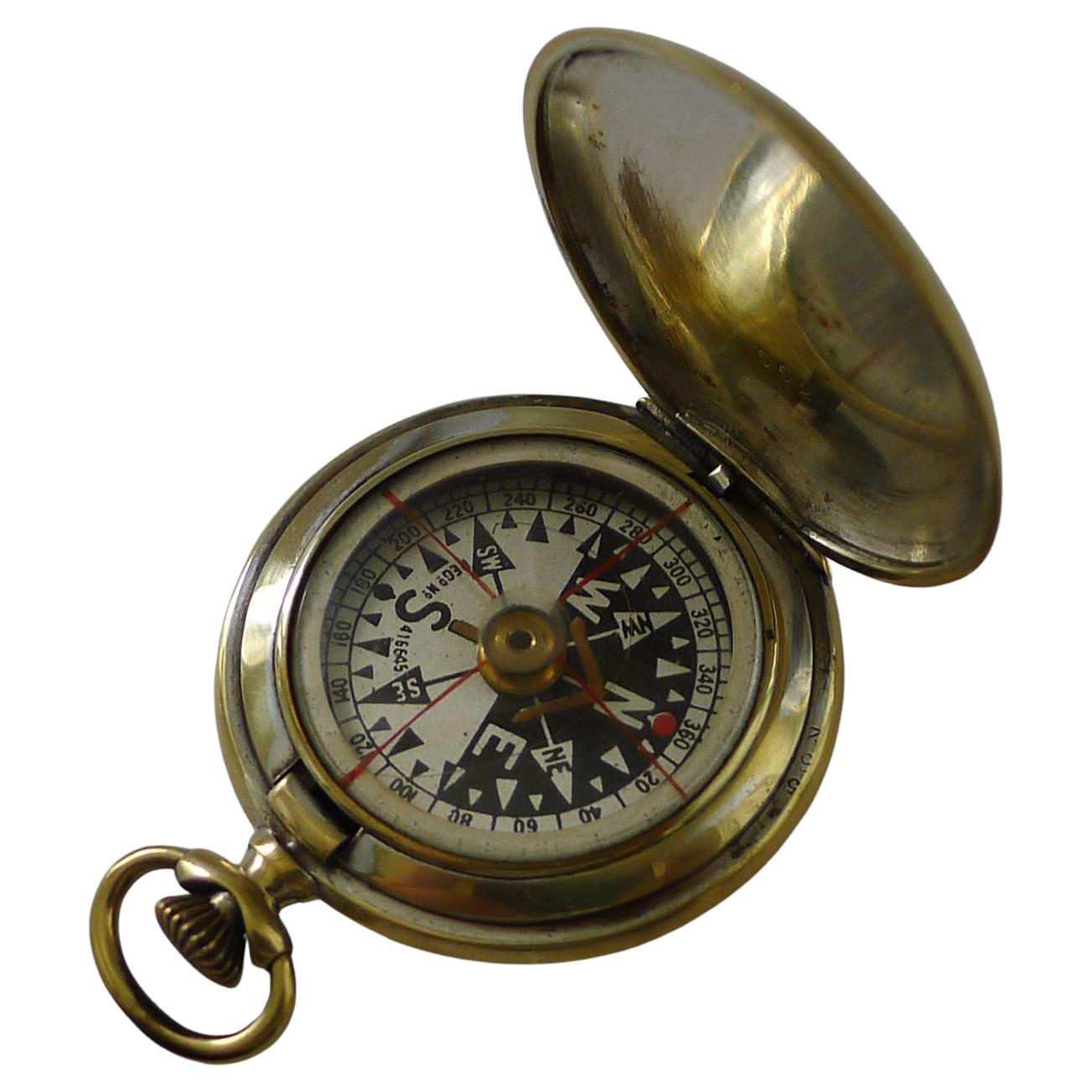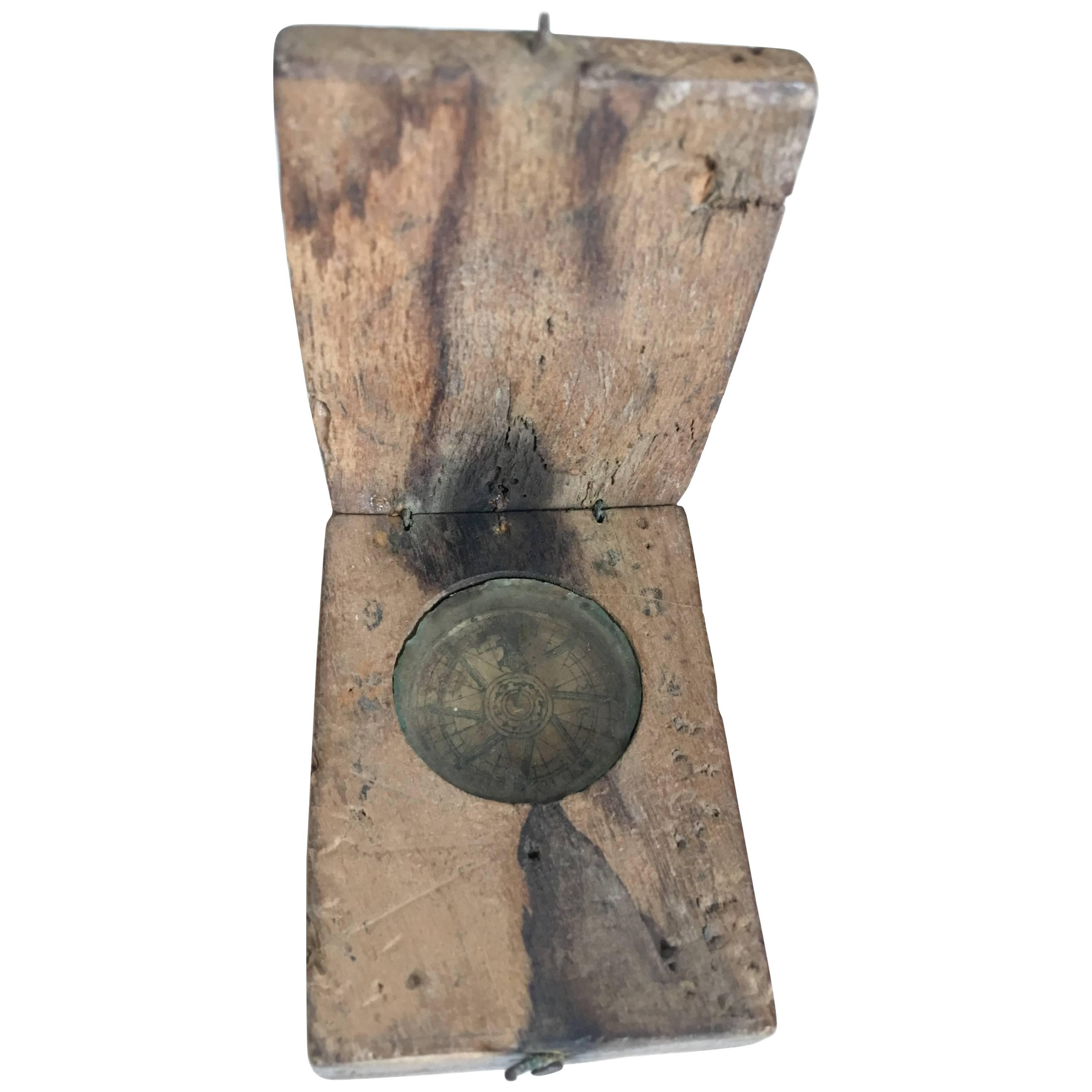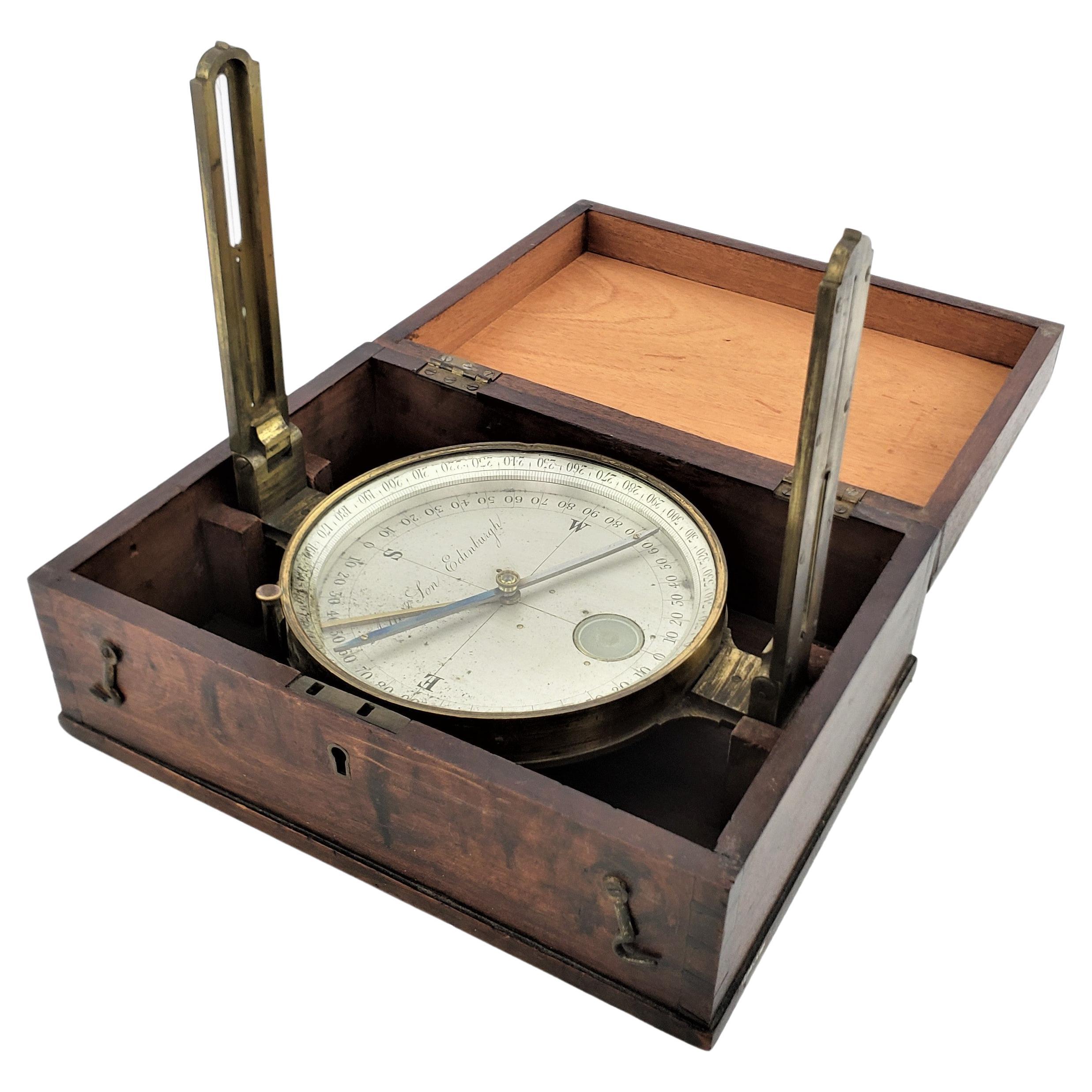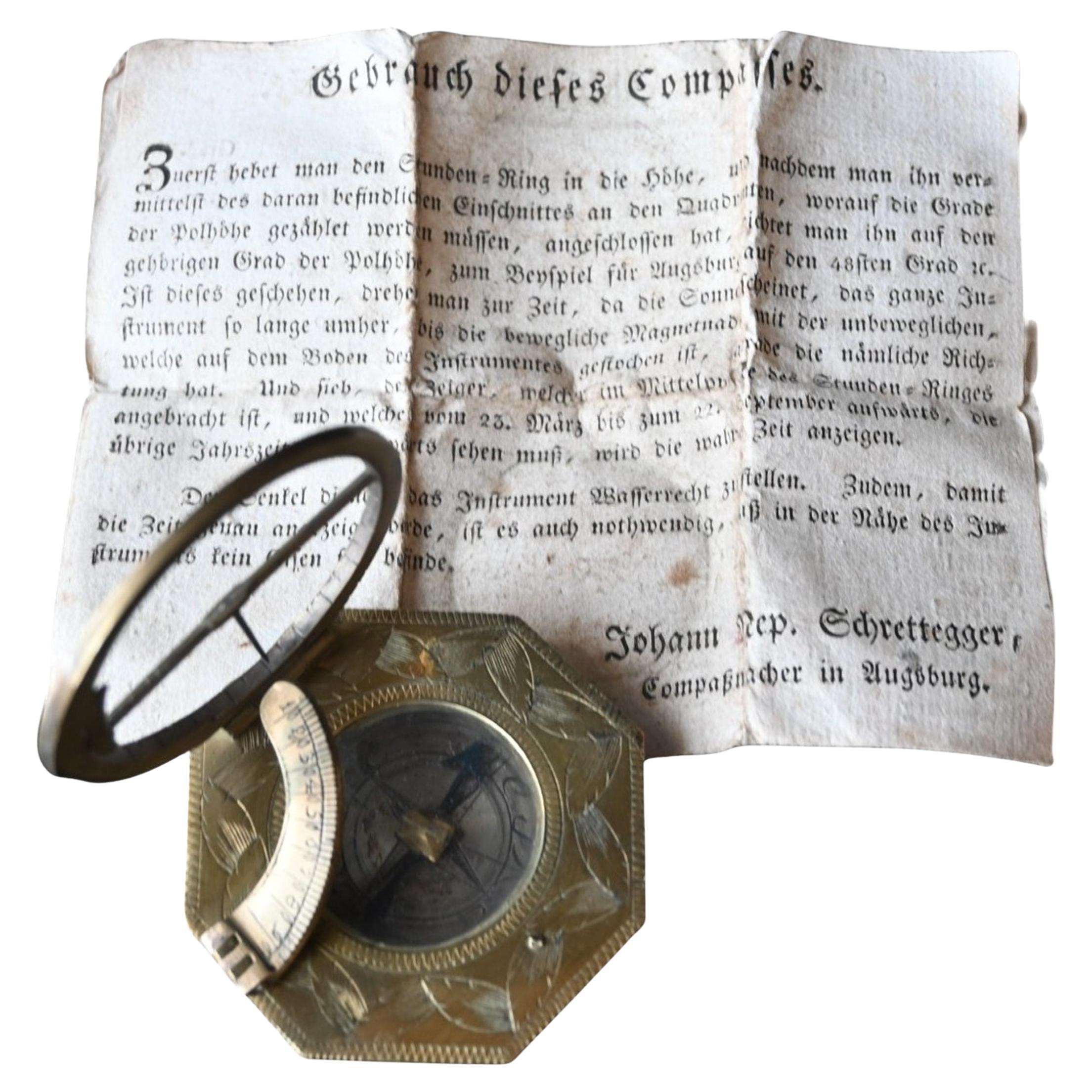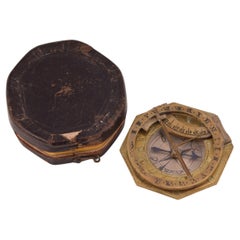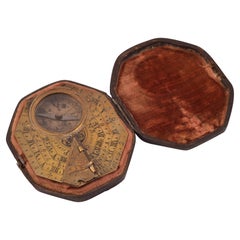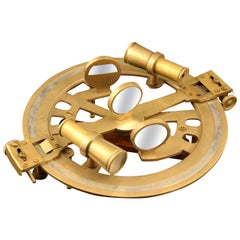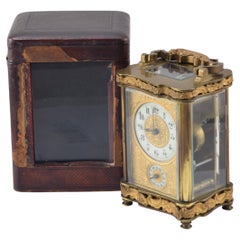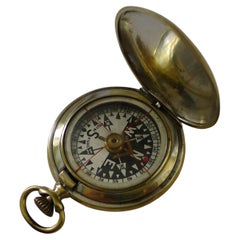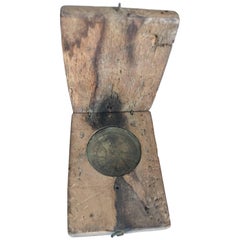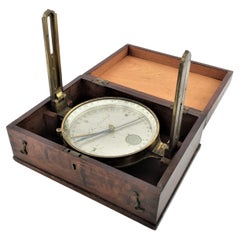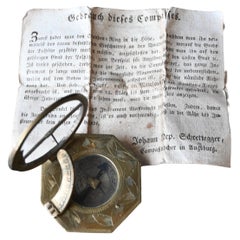Items Similar to Compass with Pocket Sundial, with Case, Bronze, Butterfield, Michael '1635-1724'
Want more images or videos?
Request additional images or videos from the seller
1 of 10
Compass with Pocket Sundial, with Case, Bronze, Butterfield, Michael '1635-1724'
$4,030.51
£3,018.54
€3,400
CA$5,649.77
A$6,224.73
CHF 3,222.30
MX$74,947.33
NOK 40,802.06
SEK 38,330.96
DKK 25,895.22
About the Item
Compass with pocket sundial, with case. Bronze. BUTTERFIELD, Michael (1635-1724). Paris, circa 1700.
Pocket sundial made of engraved metal, with a gnomon in the shape of a bird with a triangle with an engraved tree, and a compass with a needle in dark metal; In this area, “Butterfield AParis 43” is also engraved. On the back, the latitudes of various cities (Madrid, Paris, Barcelona, etc.) have been engraved, and a decorative architectural element has been placed in the center of the piece. The case, adapted to the piece, has an upholstered interior to better protect it. Michael Butterfield was a mathematician who made measuring instruments based in Paris from the last quarter of the 17th century who continued to work until the early 18th century. Although he was of English origin, he collaborated with the Royal Academy of Sciences in the French capital and worked as an engineer at the court of Louis XIV. It is known that he opened a shop in Saint-Germain in 1677, from which he sold sundials. Similar model in silver auctioned at Christies London on November 17, 2009. Lot 106 ·
Size: 7,5x6,5x1 cms / Estuche 8,5x7,5x2 cm
International Buyers – Please Note: for those articles that need Export Permits (those older than 100 years), the obtaining of the Permit will be processed without additional expenses (if you choose the seller sends it to you), but the period for the obtention of it may vary from 10 to 35 days.
- Dimensions:Height: 2.96 in (7.5 cm)Width: 3.35 in (8.5 cm)Depth: 0.79 in (2 cm)
- Style:Neoclassical (Of the Period)
- Materials and Techniques:
- Place of Origin:
- Period:
- Date of Manufacture:circa 1700
- Condition:Wear consistent with age and use. Minor losses. Minor fading.
- Seller Location:Madrid, ES
- Reference Number:Seller: ze3131stDibs: LU2951328947622
About the Seller
4.8
Vetted Professional Seller
Every seller passes strict standards for authenticity and reliability
Established in 1985
1stDibs seller since 2017
351 sales on 1stDibs
Typical response time: 18 hours
- ShippingRetrieving quote...Shipping from: MADRID, Spain
- Return Policy
Authenticity Guarantee
In the unlikely event there’s an issue with an item’s authenticity, contact us within 1 year for a full refund. DetailsMoney-Back Guarantee
If your item is not as described, is damaged in transit, or does not arrive, contact us within 7 days for a full refund. Details24-Hour Cancellation
You have a 24-hour grace period in which to reconsider your purchase, with no questions asked.Vetted Professional Sellers
Our world-class sellers must adhere to strict standards for service and quality, maintaining the integrity of our listings.Price-Match Guarantee
If you find that a seller listed the same item for a lower price elsewhere, we’ll match it.Trusted Global Delivery
Our best-in-class carrier network provides specialized shipping options worldwide, including custom delivery.More From This Seller
View AllSundial and Compass with Case, Schrettegger, Johan, Augsburg, Germany, Ca 1800
Located in Madrid, ES
Sundial and compass with case. Bronze. SCHRETTEGGER, Johan. Augsburg, Germany, around 1800.
Sundial with a polygonal shape made of bronze, engraved with plant elements on the front,...
Category
Antique Late 18th Century German Neoclassical Scientific Instruments
Materials
Bronze, Other
Sundial with Compass and Case, Bronze, Bion, Nicholas, Paris, 18th Century
By Nicholas Bion
Located in Madrid, ES
Sundial with compass and case. Bronze. BION, Nicholas. Paris, 18th century.
Polygonal sundial with a bird-shaped gnomon and engraved triangular piece, which presents, on one side, ...
Category
Antique 18th Century French Neoclassical Scientific Instruments
Materials
Bronze, Other
Circular Sextant, Decorative Piece, 20th Century
Located in Madrid, ES
The sextant is an instrument that allows to measure angles between two objects such as two points of a coast or a star, traditionally the sun of the earth and the horizon. Knowing th...
Category
Late 20th Century Spanish Other Nautical Objects
Materials
Metal, Other
Carriage clock with case. 19th century
Located in Madrid, ES
Travel clock with case. Metal, glass, leather, etc. XIX century.
Case with lid at the top and front with a transparent glass sheet, upholstered on the inside, containing a travel cl...
Category
Antique 19th Century European Neoclassical Revival Carriage Clocks and T...
Materials
Metal, Other
Pocket Watch, Deroches Brothers, Gilded Metal, Enamels, Etc. P Late 18th Century
Located in Madrid, ES
Pocket watch, Deroches Brothers. Gilded metal, enamels, etc. Possibly towards the end of the 18th century.
Pocket watch with a case with a transparent glass part and a composition ...
Category
Antique Late 18th Century European Neoclassical Carriage Clocks and Trav...
Materials
Metal, Enamel, Other
Decorative Alidade, Metal, 20th Century
Located in Madrid, ES
It has a cover to protect the lens made of the same gold metal in which the rest of the instrument is made. The lines, pure and clean, are the protagonists, and make it a great opti...
Category
20th Century Unknown Other Scientific Instruments
Materials
Metal, Other
You May Also Like
Antique English Brass Cased Compass Reg. No. For 1903
Located in Bath, GB
A handsome cased late Victorian or Edwardian compass with hinged lid, the little button on the top used to open; just like a full hunter pocket watch.
The dial is lucky enough to ha...
Category
Antique Early 1900s British Edwardian Scientific Instruments
Materials
Brass
19th Century, Compass and Sundial Together
Located in Miami, FL
19th century, compass and sundial together.
Category
Antique Late 19th Century French Baroque Scientific Instruments
Materials
Wood
Antique Brass Scottish Surveyor's Compass in Fitted Wooden Box
Located in Hamilton, Ontario
This antique surveyor's compass originates from Scotland and dates to approximately 1880 and made in the period Victorian style. The compass case is composed of solid brass with a me...
Category
Antique Late 19th Century Scottish Victorian Scientific Instruments
Materials
Metal, Brass
Rare 18th Century Equatorial Sundial And Compass By Johann Nepomuk Schrettegger
Located in Bilzen, BE
"Rare 18th Century Equatorial Sundial And Compass By Johann Nepomuk Schrettegger,"
Rare 18th-Century Equinoctial Sundial & Compass by Johann Nepomuk Schrettegger, Augsburg
Maker: Joh...
Category
Antique 18th Century German Louis XVI Scientific Instruments
Materials
Brass
End 19th Century Antique Magnetic Topographic Compass Made in Brass and Oak
Located in Milan, IT
Magnetic topographic compass, of oak and brass; instrument consisting of a magnetized needle free to rotate on a horizontal plane, marking with the tip of the needle the direction of magnetic north, compass card with eight winds complete with goniometric circle divided into 360 °, complete with the compass needle lock. Italian manufacture of the late 19th century. Very good condition. Measure 3.1x3.1 height 1.
Shipping is insured by Lloyd's London; our gift box is free (look at the last picture).
The invention of the compass is mysterious but it is well known that magnetite was discovered in Magnesia, a city of Asia Minor. We can find the first indications about the use in Europe of the magnetic force for orientation at the end of the XII century...
Category
Antique 1890s Italian Scientific Instruments
Materials
Oak
WWI British Military Pocket Compass of Brass with Original Leather Case
Located in Austin, TX
A working British marching or sighting compass of brass with original leather case from World War I - made for military and civilian use.
A handsome piece of militaria and a fine me...
Category
Vintage 1910s English Edwardian Historical Memorabilia
Materials
Metal, Brass
More Ways To Browse
Gold Compass
Compass Sundial
Bronze Compass
Antique Compass Sundial
18th Century Compass
Antique Gold Compass
Pocket Compass
Antique Pocket Compass
Antique Pocket Sundial
Pocket Sundial
Antique Pocket Sundial Compass
Antique Balance Scales Scales
Antique Scale Plate
Carved Wood Barometer
English Brass Telescope
Medical Collectibles
Brass Balance Scale
English Barometer
